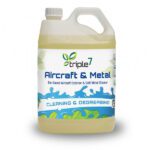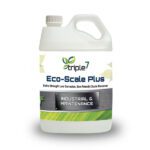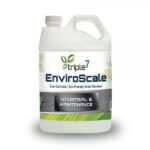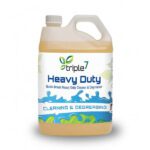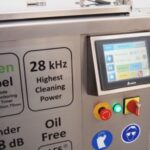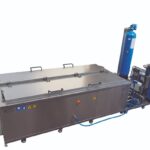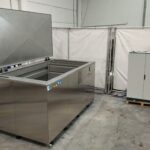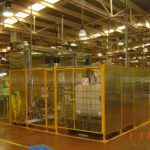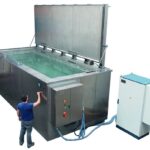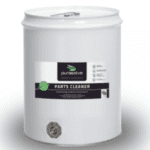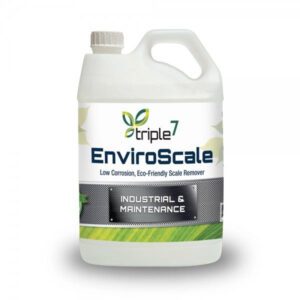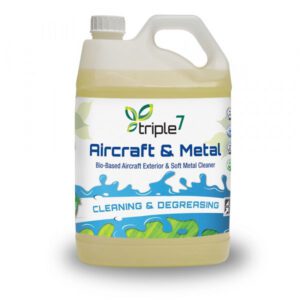The Impact of Lime Scale on Different Types of Heat Exchangers in Power Plants
Case Study-22
- Home
- Case Studies
- The Impact of Lime Scale on Different Types of Heat Exchangers in Power Plants
The Impact of Lime Scale on Different Types of Heat Exchangers in Power Plants
Introduction
Heat exchangers play a vital role in power plants, facilitating efficient heat transfer between fluids. However, the presence of lime scale and scaling can significantly affect the performance and lifespan of these heat exchangers. In this article, we will explore how lime scale impacts the different types of heat exchangers commonly used in power plants and discuss effective methods to descale and prevent limescale deposits.
Shell and Tube Heat Exchangers
Shell and tube heat exchangers, being the most commonly used type, are susceptible to lime scale buildup. Hard water limescale, formed by the precipitation of calcium and magnesium carbonates, can coat the inner surfaces of the tubes, reducing heat transfer efficiency. This scaling effect restricts fluid flow, increases energy consumption, and lowers overall system performance. Regular descaling using a calcium and limescale remover is essential to maintain optimal performance and mitigate the negative effects of lime scale.
Plate Heat Exchangers
Plate heat exchangers are also prone to scaling, especially in applications involving cooling water for generators. The narrow flow passages between plates can easily become clogged with limescale deposits, hindering heat transfer. To address this issue, periodic descaling is crucial. Using descaling agents specifically formulated for plate heat exchangers helps remove limescale efficiently and restore the heat exchanger’s performance.
Air Cooled Heat Exchangers
Air-cooled heat exchangers (ACHEs) offer an alternative to water-cooled systems, but they are not immune to lime scale problems. The finned tubes in ACHEs can accumulate limescale deposits over time, reducing airflow and heat dissipation. This can lead to higher temperatures and diminished cooling efficiency. Regular inspections and descaling using appropriate methods are necessary to prevent and remove limescale buildup.


Regenerative Heat Exchangers
Regenerative heat exchangers are commonly used for heat recovery in power plants, but they can also suffer from scaling issues. Lime scale deposits can form on the rotating matrix, impeding heat transfer and reducing overall efficiency. Implementing a descaling regimen using suitable descaling agents is crucial to maintain the performance and reliability of regenerative heat exchangers.
Fin Fan Heat Exchangers
Fin fan heat exchangers, utilized for cooling large generators and transformers, are susceptible to limescale deposits on the finned tubes. The accumulation of scale restricts airflow, hindering heat dissipation and compromising cooling effectiveness. To prevent scaling, routine inspections and descaling procedures are necessary. Using appropriate descaling methods will help remove limescale and maintain efficient operation.
Effective Descale Methods
To get rid of limescale deposits in heat exchangers, it is essential to employ effective descaling techniques. Chemical descaling using specialized descaling agents is a common method. These agents dissolve and remove limescale buildup without damaging the heat exchanger materials. Mechanical descaling, such as high-pressure water jetting or brush cleaning, can also be effective, particularly for more severe scaling.
Prevention is Key
Preventing limescale buildup is crucial to avoid the negative impact on heat exchangers. Implementing water treatment methods, such as water softening or using chemical inhibitors, can help reduce scale formation. Regular maintenance, including inspections and cleaning, is vital to detect and address early signs of scaling before it affects heat exchanger performance.
Conclusion
Lime scale and scaling pose significant challenges to the efficient operation of different types of heat exchangers in power plants. Shell and tube heat exchangers, plate heat exchangers, air-cooled heat exchangers, regenerative heat exchangers, and fin fan heat exchangers are all susceptible to limescale deposits. However, through proper descaling methods and preventive measures, such as using calcium and limescale removers and implementing water treatment strategies, the detrimental effects of limescale can be mitigated. Maintaining the cleanliness and integrity of heat exchangers is crucial for ensuring optimal performance, energy efficiency, and the overall reliability of power plants.

